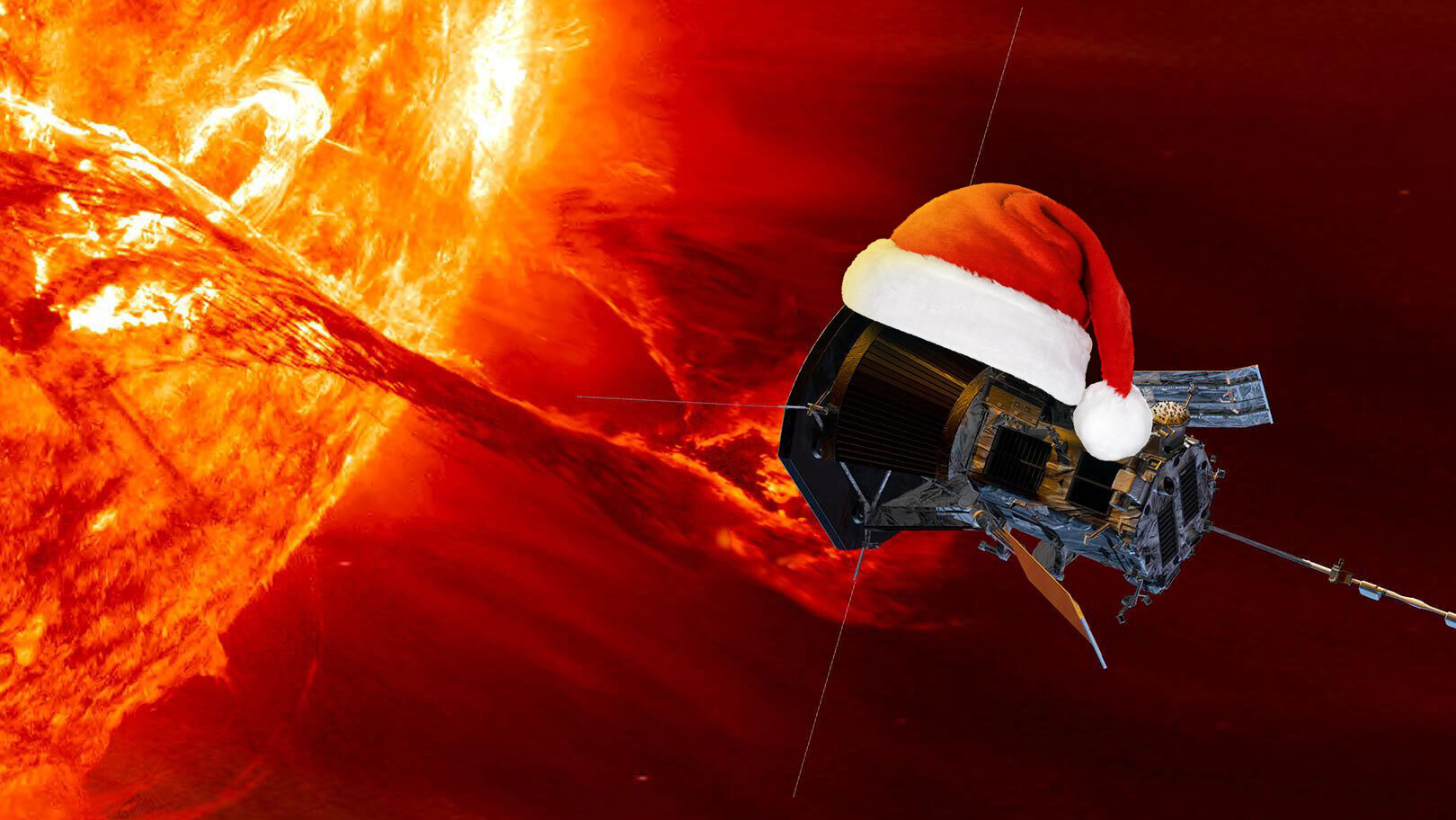Twas the night before Christmas, when all through the Solar cycle,
这是圣诞前夜,当所有通过太阳周期,
Not a sunspot was stirring, not even a burst;
没有一丝太阳黑子在活动,连一闪而过的都没有;
The stockings were all hung by the corona with care,
袜子都挂在电晕带旁,小心又仔细,
In hopes that the Parker Solar Probe would soon be there.
期待帕克太阳探测器不久将抵达那里。
Almost no one ever writes about the Parker Solar Probe anymore.
几乎没有人再写帕克太阳探测器了。
Sure, the spacecraft got some attention when it launched. It is, after all, the fastest moving object that humans have ever built. At its maximum speed, goosed by the gravitational pull of the Sun, the probe reaches a velocity of 430,000 miles per hour, or more than one-sixth of 1 percent the speed of light. That kind of speed would get you from New York City to Tokyo in less than a minute.
当然,这艘宇宙飞船在发射时引起了一定的关注。毕竟,它是人类迄今为止建造的最快移动物体。在太阳引力的助推下,探测器达到其最高速度时,时速可达 43 万英里,即光速的六分之一多一点。这样的速度能让你在不到一分钟的时间内从纽约市抵达东京。
And the Parker Solar Probe also has the distinction of being the first NASA spacecraft named after a living person. At the time of its launch, in August 2018, physicist Eugene Parker was 91 years old.
帕克太阳探测器还有一个独特之处,即它是首个以在世人物命名的 NASA 航天器。2018 年 8 月发射时,物理学家尤金·帕克已 91 岁高龄。
But in the six years since the probe has been zipping through outer space and flying by the Sun? Not so much. Let's face it, the astrophysical properties of the Sun and its complicated structure are not something that most people think about on a daily basis.
但在探测器飞驰于外太空并掠过太阳的这六年里,情况并非如此。面对现实吧,太阳的天体物理特性和其复杂的结构并非大多数人日常会思考的问题。
However, the smallish probe—it masses less than a metric ton, and its scientific payload is only about 110 pounds (50 kg)—is about to make its star turn. Quite literally. On Christmas Eve, the Parker Solar Probe will make its closest approach yet to the Sun. It will come within just 3.8 million miles (6.1 million km) of the solar surface, flying into the solar atmosphere for the first time.
然而,这个小型探测器——其质量不足一公吨,科学载荷仅约 110 磅(50 公斤)——即将迎来它的闪耀时刻。确实如此。在圣诞前夜,帕克太阳探测器将实现迄今为止对太阳的最接近接触。它将飞至距太阳表面仅 380 万英里(610 万公里)处,首次进入太阳大气层。
Yeah, it's going to get pretty hot. Scientists estimate that the probe's heat shield will endure temperatures in excess of 2,500° Fahrenheit (1,371° C) on Christmas Eve, which is pretty much the polar opposite of the North Pole.
是的,温度将会变得相当高。科学家估计,在圣诞前夜,探测器的热屏蔽将承受超过 2,500 华氏度(1,371 摄氏度)的高温,这与北极的寒冷几乎完全相反。
Going straight to the source
直击源头
I spoke with the chief of science at NASA, Nicky Fox, to understand why the probe is being tortured so. Before moving to NASA headquarters, Fox was the project scientist for the Parker Solar Probe, and she explained that scientists really want to understand the origins of the solar wind.
我与美国宇航局科学部门主任尼基·福克斯进行了交谈,以了解为何要对探测器进行如此严苛的测试。在调任至美国宇航局总部之前,福克斯曾是帕克太阳探测器的项目科学家,她解释说,科学家们迫切希望了解太阳风的起源。


 Loading comments...
Loading comments...
